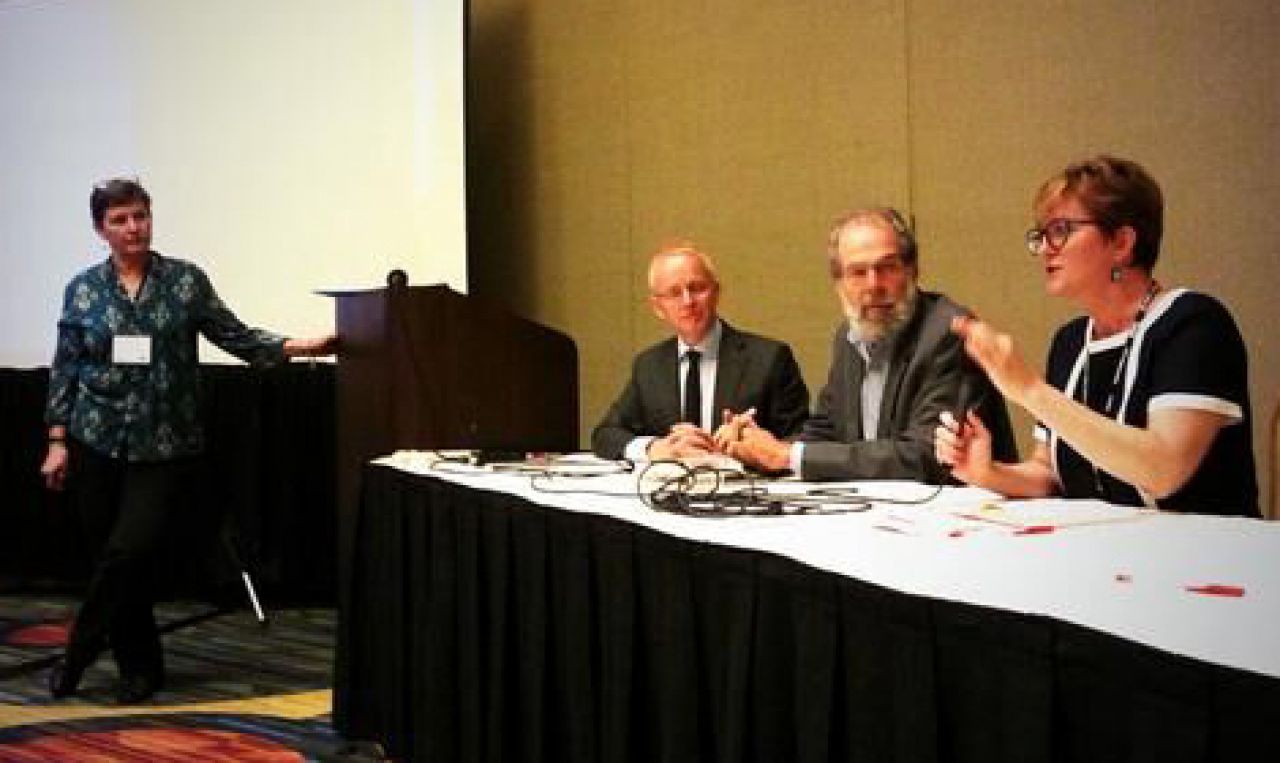September 16, 2015
Connolly-Ahern discusses refugee communications with AEJMC conference panel

Research funded by The Page Center finds that media paint refugees with a wide—often negative—brush. Data show that instead of telling the stories of real people in need, common narratives focus on the mass population as a bane of society and a detriment to the refugees’ new countries. Colleen Connolly-Ahern hopes the new research will help change that.
Connolly-Ahern, associate professor of advertising/public relations, wants to know how communication scholars can help refugees send and receive the messages they need. She participated in a featured panel discussion on the topic in August at the AEJMC conference in San Francisco. Her work is part of a two-year Page Center project researching advocacy and charitable action.
“We want to help communication researchers to address these issues of social injustice,” Connolly-Ahern said. “Given the size of these issues, we need to foster larger international projects run by regional working groups of scholars.”
Also on the panel were Adrian Edwards, head of news and media at the United Nations, and Peter Laufer from the University of Oregon. Each spoke about the need for improved communications that paint realistic pictures of refugee situations in Europe, Asia, Africa and the Americas. Connolly-Ahern highlighted preliminary results from several ongoing Page Center projects that may help respond to that need. One of the projects is examining how African refugees acclimate themselves once they arrive in Israel, a country that is already home to many immigrants.
“There are problems with acceptance,” she said. “The researchers are studying how media narratives can help Israeli citizens by showing them where refugees fit in and how they can help. Most importantly, citizens need to have a realistic view of what’s happening.”
In 2014, the total number of people displaced by war reached a high at 59.5 million, according to the United Nations High Commission for Refugees. This is up nearly 8 million from 2013. However, where citizens in developed countries often panic at the idea of millions of refugees crossing their borders, a large percent are moving between developing countries.
“The truth is that most refugees and internally displaced people are staying in the developing world,” Edwards said. “A quarter of the world’s refugees are in the 25 least developed countries. North America, Europe, Australia and northeast Asia amounts to around 5 percent of the displaced total.”
Edwards said the average citizen living in the developed world may have the impression his or her country is experiencing a “human tide of refugees” roaring across the border like a tidal wave, but that is not the case.
While mass migrations and human displacements bring a host of issues, ranging from the political to the agricultural, these communications experts are seeking ways for refugees to better themselves. The scientists are studying the messages refugees receive. They then measure their awareness of the situations they face.
For example, another Page Center project is looking at how refugees use social media to not only communicate with each other, but keep tabs on life in their homeland. Connolly-Ahern said despite being poor, 90 percent of refugees in Cantania, Sicily, one of the UN’s refugee facilities, own smartphones. It is often their most important possession. These phones fill in the information gaps of mass media and, specifically through Facebook, they can instantly monitor what family members, friends, neighbors, and others are saying and doing in response to their country’s struggles.
Improving these messages can benefit the world’s population. One idea might be to create algorithms for monitoring social media to identify youth at risk of being radicalized. Projects are comparing how countries are reacting and what messages will work best to alleviate stress caused by displacement and isolation. The more data that is uncovered, researchers will be able to make progress on using communications to keep refugees stay informed, aware and safe.
